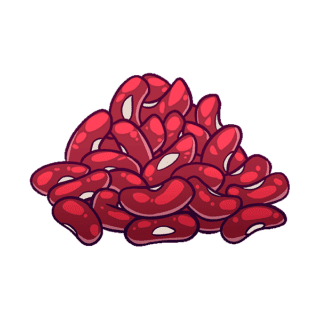Red Kidney Bean
Although there are many different types of kidney beans such as the white cannellini, the first kind that comes to mind is likely the red kidney bean. They are often mistaken for Azuki (Japanese Red Bean) because of their similar color and texture, but the Azuki bean is smaller and sweeter in taste, while the kidney bean has a more earthy texture and plain taste. Of the cuisines of Asia, they’re most common in Desi dishes from much of India, Pakistan, and Bangladesh, as well as Nepal. Elsewhere, they’re integral to many Creole and Cajun dishes like red beans and rice.
Like all beans, these are grown on the vine and then removed from the pod. They’re then dried and can subsequently last for quite a long time. Because of this, they have to be soaked before cooking — otherwise you’d end up with a hard, rather unappealing mess. (Although of course this isn’t the case for canned beans, which are already soft and ready to cook.) Soaking and boiling is especially important for red kidney beans compared to others because they have a toxin in them that can cause some… less-than-pleasant effects if this step is ignored.
Also like other beans, red kidney beans are extremely nutrient-dense. Most famously, beans when combined with rice provide complete amino acids and so are a great vegetarian source of protein. Less than half a cup of kidney beans has nine grams of protein! That’s a lot!
They’re also high in fiber, complex carbohydrates for slowly released, long-lasting energy, and many vitamins and minerals.
You can find red kidney beans at Uwajimaya in our pantry aisle of our Grocery Department, as well as canned kidney beans in our canned goods section.





